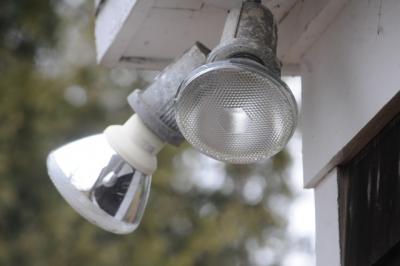Lighting Law on Hold

An amendment that would update East Hampton Village’s lighting code was put on hold at the village board’s meeting on Friday when the executive director of the East Hampton Business Alliance asked, on behalf of the group’s membership, that the hearing remain open.
The proposed amendment to a code enacted in 2004 was drafted by the village’s design review board in consultation with the village board and Susan Harder, the state representative of the International Dark Sky Association. It is intended to address “light trespass,” or lighting that intrudes into neighboring properties, as well as technological improvements including those allowing energy conservation.
Margaret Turner of the business alliance asked the board to reconsider an addition to code defining landscape lighting as nonessential. In many cases, she said, such lighting “could actually work very well as essential,” such as when illuminating walkways. “In many cases, it’s low to the ground, there is no upward lighting, and virtually no glare and generally no light trespass onto other properties.”
Ms. Turner also told the board that input from the Police Department was critical to the public-safety aspect of lighting regulations. The population is aging, she said, “and with that comes diminished eyesight, especially in the evenings.”
Donald Hunting, president of the East Hampton Library’s board of managers, also asked the board to keep the hearing open, conveying the wishes of Dennis Fabiszak, its director, who was out of town.
Drafting the proposed legislation had been “a learning experience for the design review board,” said Carolyn Preische, that board’s vice chairwoman. As an example, the board had worked closely with the library to modify lighting in its recently renovated parking lot when the approved lighting “turned out to be a brighter, harsher light than we anticipated it was going to be.” Library officials were cooperative, she said, with only the addition of a small filter required to mitigate the fixtures’ brightness. “It all goes back to the original code,” which said that light shall not trespass over property lines. The proposed legislation, she said, is simply an expansion of the code as enacted in 2004.
But Kathleen Cunningham, executive director of the Village Preservation Society, supported the amendment. “Light trespass is a big issue for a residential community such as ours,” she said. “I applaud the board for beginning this process.”
Ms. Harder, who is also a lighting designer, said that intrusive lighting impacts both the environment and human health, while new technologies allow far greater control over energy use. Even “the City that Never Sleeps and the “City of Light,” New York and Paris, have enacted lighting ordinances, she said. Further, she added, there is no documented proof that all-night lighting deters crime.
“There is nothing whatsoever unsafe that’s proposed in your amendments,” Ms. Harder said. “These adjustments will save everybody money and reduce not just light pollution, but also air pollution and water pollution,” given that electricity is generated by the burning of coal and oil. She said she was willing to consult with the village should adjustments to the code be necessary. “My hope is that you will enact this. It sets a good example for the town, who I hope will consider similar legislation.”
The hearing was adjourned until the board’s next meeting, on Jan. 16.
The board did adopt, with a slight modification, an amendment to village code requiring a public hearing prior to the issuance of a permit for the erection of new utility poles. An exception was added exempting applications for installation of poles that are so minor as to require no environmental assessment.
As it has with other several residential streets, the board adopted an amendment reducing the speed limit on Dayton Lane to 25 miles per hour.
